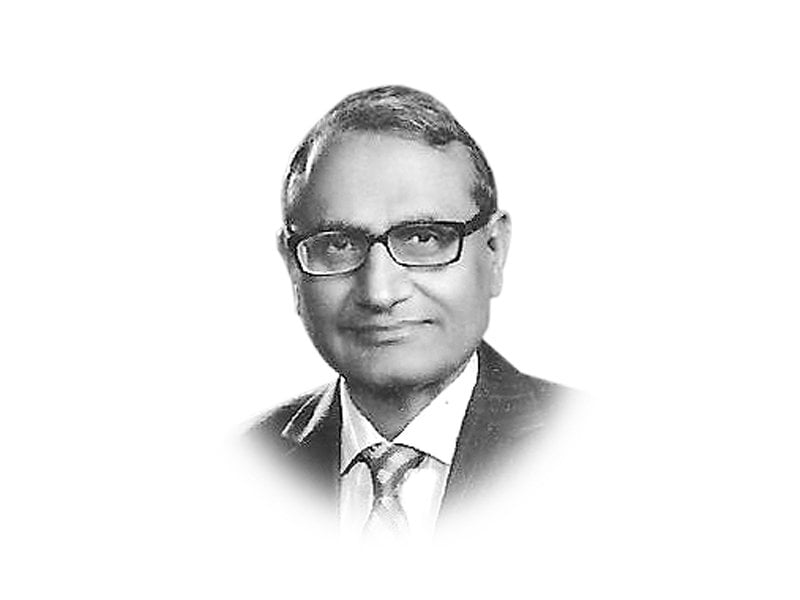

To show its seriousness about taking development decisions down to the grassroots level, an allocation of one billion rupees has been made to hold local bodies elections within three months. The law will also be amended to add the lowest tier of village councils. Reform of the thana katcheri culture and the patwari system is also on the cards. Transparent land records will help rid the province of the benami transactions. In fiscal terms, there is a balance between expenditure and revenues — something of a rarity in our financial history. There is, however, a failure to tax the untaxed agricultural incomes and the under-taxed property owners. Setting up of the K-P Revenue Authority is a step in the direction of eventually collecting GST on services. The proposed levy on transit is octroi by another name. Even the impressive austerity regime outlined in the budget will yield a pittance. The large number of new initiatives would require more resources than has been envisaged and the budgeted zero deficit may not materialise.
It seems the revenue has not been forecast realistically. Similarly, the target of achieving a growth rate of seven per cent in the gross provincial product in a matter of three years is an unrealisable dream, as also is the reduction of poverty by 50 per cent. In the past two decades, the province experienced an annual growth rate of 4.5 per cent. The annual increase in income per capita during the same period was only 1.5 per cent. Given the precarious law and order situation in the province and the deteriorating state of the national economy, the maintenance of the past average growth will be a major achievement. If the provincial government can improve its institutional framework for effective service delivery, reduce corruption and promote transparency, it will have laid the foundation for higher and equitable growth towards the end of its term. The future lies in attracting private investment in industry by providing cheaper energy, trade with Central Asia, tourism and forestry.
Published in The Express Tribune, June 21st, 2013.
Like Opinion & Editorial on Facebook, follow @ETOpEd on Twitter to receive all updates on all our daily pieces.
COMMENTS (6)
Comments are moderated and generally will be posted if they are on-topic and not abusive.
For more information, please see our Comments FAQ
1725967717-0/Untitled-design-(3)1725967717-0-405x300.webp)
1719925273-0/BeFunky-collage-(46)1719925273-0-165x106.webp)
1730412280-0/kamala-(3)1730412280-0-165x106.webp)









@author and all other commentators, the Best results for this budget can be predicted fairly by comparing the last past years budgets allocation vs actuals. If last years actuals is less than present budget by more than 20%, it is unachieveable. This is standard thumbrule.
This is because for every 5% increase in deliveries, there is atleast 25% increase in technology/infrastructure and man power.
Without this Infrastructure in place and man power in place delivery is impossible
for those who say that salaries have been added in education, please see in white paper that the salaries jump from 29 million rupees to a whooping 55 billion rupees.
this is a short term implementation of education emergency in the following ways
hiring new teachers renting out schools instead on constructing one to put funds to most optimistic usage (best part) public-private partnerships for making education available to 100 % and many more.
Please before making any conclusion, read the policy and then read complete education related part of output based budget which is provided on financekpk website.
All those who have any doubts or confusions regarding kpk budget please go to financekpk.gov.pk and download and read budget white paper. This budget couldnot have been more comprehensive, thumbs up
Now just pray that they be able to implement it as well. Pray regardless of any political party affiliation as the success of this budget will ultimately lead to our success.
The education budget increased from Rs. 12.2 Billion to 13.8 Billion. The 66.6 number is by putting the salaries in the education column as well (KP's budget white paper puts that number at 72), which is traditionally not done. The education emergency treatment in KP is a farce. Its a lie. One would have hoped you would know this. Most of the 13.8 billion is going towards continuing the initiatives of the last government.
Sir you have written an article with just a cursory look at budget. First the education budget is a numbers game without much increase. Most of the education schemes you mentioned were being planned by previous government. Lastly how on earth can you promote gas based power plants given the acute shortage of gas.
Brave ET. I am amused that even a positive article for PTI ends up having negative headline from you.